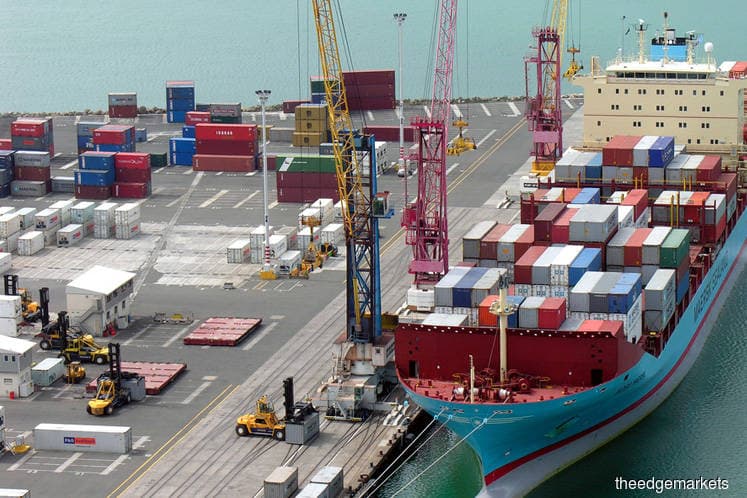
KUALA LUMPUR (June 29): The Covid-19 pandemic sent Malaysia’s exports to plunge by 25.5% year-on-year (y-o-y) to RM62.7 billion — its biggest fall since May 2009.
It was the second straight month of a double-digit drop for exports after a 23.8% y-o-y fall to RM64.9 billion in April.
The contraction seen in May's export numbers was sharper than economists' expectations. The Bloomberg consensus had estimated a 20.2% drop in exports in May, while the Reuters consensus had projected a 19.9% contraction.
Likewise, the country’s imports also suffered the worst drop since January 2009, falling by a staggering 30% to RM52.3 billion from a year earlier, according to the Department Of Statistics Malaysia (DOSM).
While the trade balance returned to a surplus of RM10.4 billion in May 2020 — after registering its first monthly deficit in over 22 years since October 1997 of RM3.5 billion in April 2020 — Malaysia’s exports recorded a decrease at a slower pace than that of imports, said the DOSM.
MIDF Research commented in a note that the latest monthly export figure indicated the prolonged impact of the pandemic on export-reliant economies, including neighbourhood countries, where they experienced a similar contraction rate of above 20% in their export figures.
Moving forward, MIDF Research said the impact of Covid-19 had emerged as the top risk to global trade flows as it affects both supply and demand for goods.
The research house expects exports to continue to deteriorate in the second quarter of this year amid a full month of the movement control order (MCO) in April and the conditional MCO (CMCO) in May, coupled with the lockdowns globally, in an effort to curb the spread of the virus.
“In addition, rising protectionism measures, particularly the re-escalation of US-China tension, pose more threats to foreign trade. This will hinder most of the countries’ effort to restart their respective economies amid the Covid-19 pandemic.
“Hence, we reiterate that export growth will contract further in 2020 at -8.3% y-o-y (2019: -1.7% y-o-y),” it added.
Meanwhile, UOB Global Economics and Markets Research maintained its full-year export projection of a 10% decline. It commented that trade activities should gradually recover in the coming months as restrictions had been lifted in low-risk countries while demand and supply conditions had resumed.
“Improving economic activity in China and Malaysia’s sustained growth in exports to China are encouraging," the research house said, adding that this could support the export figure.
For the cumulative five months (January to May), exports fell 9.7% y-o-y to RM366.16 billion from RM405.35 billion recorded for the same period of last year.
Interestingly, exports to China in May 2020 continued to record a growth for a second straight month at 4.5% y-o-y, driven by petroleum products (up 96% y-o-y) and palm oil (up 48.8% y-o-y), among others. In April, exports to China recorded a 4.2% growth y-o-y.
However, outbound shipments to other key countries including the US, Japan, the European Union (EU) and the Asean region contracted. Exports to the US and the EU declined by 9.3% y-o-y and 25.4% y-o-y respectively but improved month-on-month (exports to the US and the EU shrank 31.1% and 41.6% respectively in April).
The y-o-y contraction in exports to Japan widened to 33% in May 2020, compared to 28.4% in April 2020. Exports to Asean countries also decreased by 30.6% in May, compared to a 24.7% decline seen in April.
Among key members of Asean, exports to the Philippines chalked the biggest drop of 48.6% y-o-y, followed by Thailand's which declined by 40% y-o-y.
